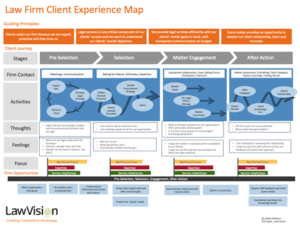This article was first published February 16, 2021 in PinHawk’s Legal Administrator Daily.
I am enjoying the discussion going on these days about hourly billing.[1] Rachel Barnett of Brooks Brothers recently outlined a well-articulated view of the negatives of the billable hour. Colin Jasper then turned the topic upside down by pointing out some of its client virtues. Colin went on to make the point that nearly every major law firm is open to creative fees, concluding that the power to change rests in the client’s hands. He headlines his discussion with the proclamation that the billable hour has ended – “long live the billable hour.”
Hourly billing rates aren’t evil; they just don’t fit all circumstances. And they are over-used and emphasized – with over 80% of all large law firm services today conducted via the billable hour, a statistic that has hardly budged for decades. As Rachel points out, this leads to undesirable consequences (e.g., misalignment of client objectives, barriers to advances in technology and law, work-life balance pressures)
Hourly billing dominates in large law today because of process friction, billing tradition, and lack of clarity around service definition and price. Clients and firms are familiar with hourly rate mechanics, whereas valuing legal services in units besides time can be tricky. Thus, change is slow, but I believe the foundations are coming together to make things happen more quickly in the coming years.
Pricing 2.0
Imagine a world where alternative pricing represents 85% of legal fees, a place called Pricing 2.0. In this environment, firms and clients are comfortable with service-based pricing, success fees, productized services. Here, service definition is standardized, bringing transparency and comparability in the marketplace. This more efficient marketplace enables cost controls, process optimization, and clear client communications. It also provides the foundation for ongoing improvement and innovation to transform legal service delivery. Hourly billing is deployed less often here.
So how do we get to Pricing 2.0? Below I offer an initial framework for the journey to this new world.
Pricing 2.0 Conditions
- Maintain, Build and Grow Trust. First, you need trust between provider and client. If trust doesn’t exist, the ability to move to new pricing models won’t happen. In no-trust environments, clients will grind down providers to the lowest rate, place restrictions on engagements, staffing, and expand their use of technology to x-ray invoices to find billing violations, causing delays in payments and increased write-offs.
- Create a Shared Vision. Next, create a shared vision. What are the client’s issues, risks, objectives from a legal and business view? How can the firm operate more proactively? Providers should strive to be business partners, not just legal partners. Create a journey map that explores their strategies, concerns, and anticipated issues. Below is a roadmap I created a few years ago to illustrate a working template for such an exercise:

- Change the Pricing Default Switch. Today, the default billing arrangement is the billable hour. Discuss with your client where you can change that right away for both sides. Work to create a new default away from hourly billing where it is best suited. Examine your work and segment those services and matters where hourly billing is most egregious. Advance new approaches for pricing and service innovation. You don’t have to do it all at once. Just one step at a time.
- Create New Billable Units. Unless you are a time traveler, we can agree that an hour is 60 minutes. It becomes less easy to decide on billable units when we move away from time. So, we need new units of value. I refer to this as mapping the legal genome. It sounds hard, but the objective isn’t to map the whole legal world but to begin creating service packages in commercial units that improve client satisfaction. Standards are evolving to help you create new billable units.[2] Recognize that you won’t get all the details worked out at the outset. Create hybrid service packages with fixed fees and hourly rates. Ask the client for help in shaping service definitions. Work with the industry to establish greater uniformity.
- Create a Data-Driven Pricing Approach. Data will be an essential part of the journey. As you start doing the above, you will recognize the need for industry information flows and answers to new questions (e.g., matter success metrics; profit metrics). You won’t be asking about hourly units[3] as much but asking about risk management, legal scenarios, business forecasts, and predictions. To do this, you will need data, and new data flows.[4] You will need to mobilize data in workflows like below that include early warning systems and alerts. New pricing will move measurement away from mechanics like hours (inputs) towards impact and outcomes, contextualizing costs against results.

- Create New Metrics. Many traditional metrics won’t do in the new world. Provider metrics like profitability will be blended within client success contours. Measuring productivity for lawyers by hours will be less common. Imagine measuring productivity by profitable contributions to your client’s risk profile. How about measuring ROI on your legal services by the client?
- Evolve Your Compensation System. All roads lead to compensation when it comes to change in law firms. One of my colleagues often says, “if your compensation doesn’t match your strategic plan, it is your strategic plan.” So, law firm compensation will have to change. But like all the items listed above, it doesn’t have to change overnight. As you start the journey to Pricing 2.0, exploring how your rewards system operates will be a vital piece of the puzzle to motivate new behaviors. Caution flag: accepting the declaration that compensation must change first and fully as a pre-requisite to getting started. That is hogwash. Don’t use compensation as an excuse to delay.
Final point. This is a journey, not a destination. The frustration held by many related to pricing change is the lack of movement on the maturity curve. Let’s consider the elements above (and others) to begin the journey towards a better place. Then we can spend less effort on the mechanics and more on the outcomes.
[1] Brooks Brothers General Counsel Rachel Barnett kicked of the latest cycle with her excellent article entitled, Down with the Billable Hour, https://www.law.com/global-leaders-in-law/2021/02/04/down-with-the-billable-hour/. Colin Jasper followed with a unique but compelling perspective making the case for hourly billing on behalf of the client side, https://positivepricing.com/2021/02/clients-wish-granted-with-the-end-of-the-billable-hour/.
[2] You are thinking this is hard? It may be but there are a whole army of people globally who are marching to create standards to help map the legal genome. One example is Standards Advancement for the Legal Industry (SALI, Sali.org), a cross-industry consortium of key voices in pursuit of the mission towards work type standardization and transparency. One of the secrets of bodies like SALI is not just the standard but the community of change agents that are created to help the industry move forward.
[3] Note that firms will still likely need to record time or use smart software to calculate cost of production, drive efficiency and to do process design and innovation.
[4] See legalmetrics.com led by David Cunningham. For those unacquainted, LegalMetrics not only is helping in the definition of industry-wide metrics, but also is creating what I refer to as a data highway to facilitate transmission of relevant, key metrics like diversity and financials.
Posted In
